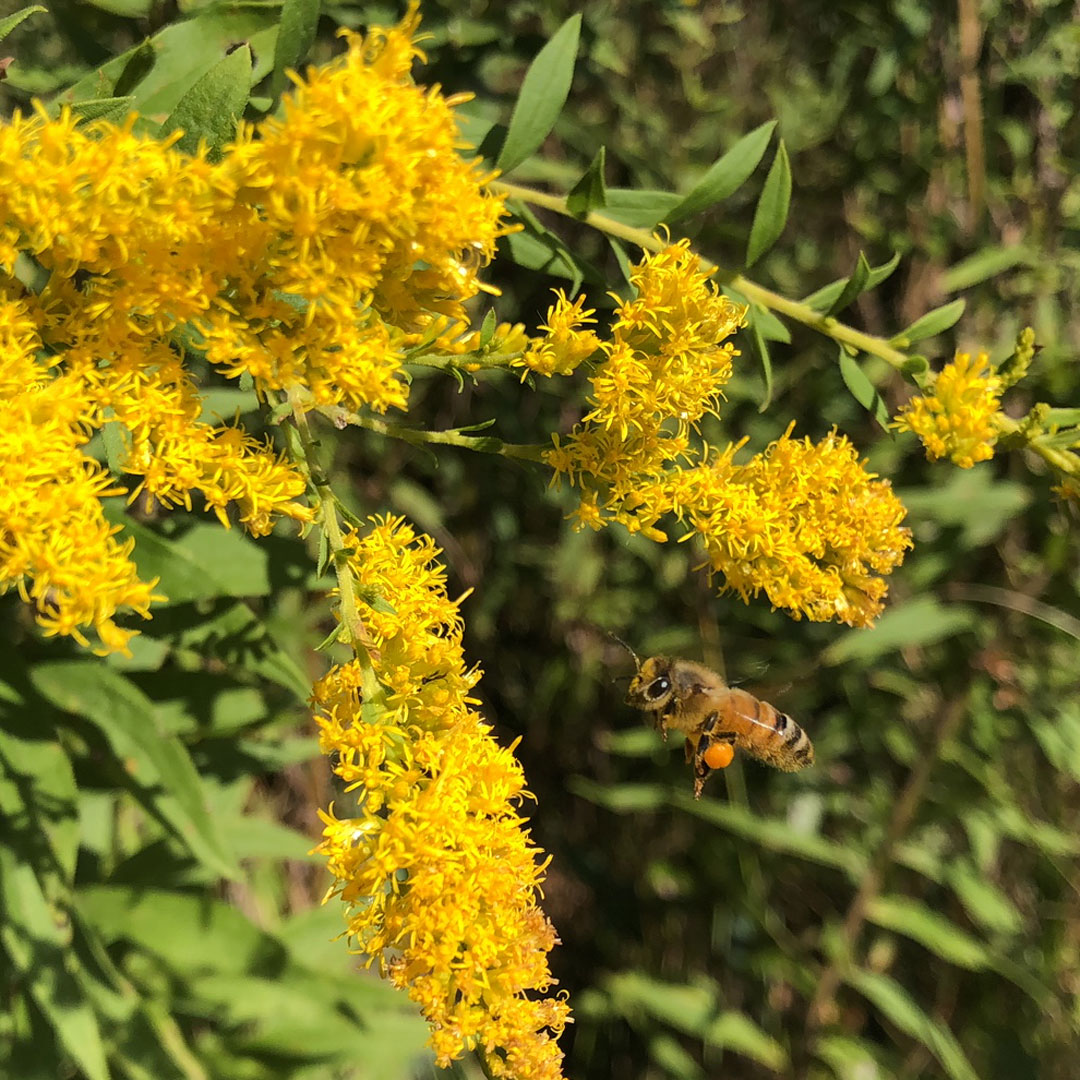
October can be a tough time of the year for bees. This is the time of the year that we can see losses in the honeybee population due to high counts of varroa mites. We may see bees absconding, or leaving their home sometimes to die, in a last chance effort to rid themselves of the mites. Many bees across the country are having a tough time right now, from forest fires to hurricanes, fall forages have been tough for them to find in some places.
I do not harvest honey until the spring for this reason. The bee colony could perish if there is some natural occurrence that does not allow the bees to store the food they need for winter. I also like to feed my bees a bee tea from the recipe that Spikenard Honeybee Sanctuary has on their website. It serves as a boost to their immune system, and helps them get the nutrients they need. Fall is also the time of year to prepare your hive for winter or tuck them in. I use pillow cases full of wood chips or wool in an empty box on top of the langstroth hive or on the empty side of my Layens hive. It is also important to reduce hive entrances, and put up wind breaks. Many people use hay bales for windbreaks, but you can plant trees or shrubs or get creative.
As for our native bees, it is an important time to leave plant stems and fallen leaves on the ground in places for the bees to hibernate through the winter. The native bees will actually make their homes in the plant stems or in the ground under the leaves, and they serve as a microclimate of warmth. They need a safe warm place to lay their eggs so that the adult bees may hatch in the spring.
Bee Blessings,
Ali Pinion Bee Guardian

